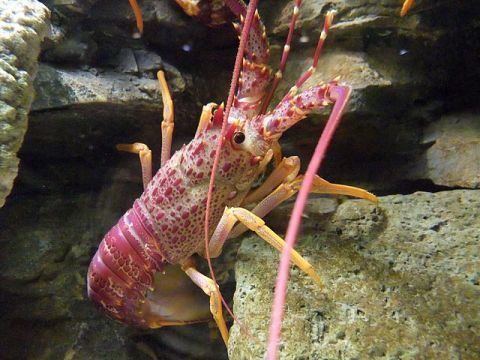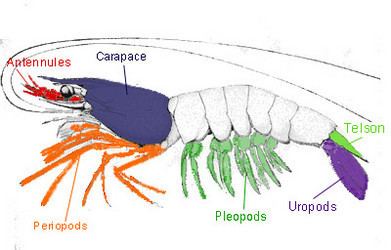Higher classification Eucarida | Scientific name Decapoda Length Red king crab: 1.8 m Rank Order | |
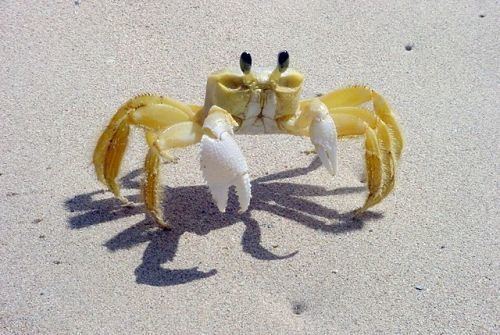 | ||
Lower classifications Crab, Caridean Shrimp, Lobster, Anomura, Hermit crab | ||
The Decapoda or decapods (literally "ten-footed") are an order of crustaceans within the class Malacostraca, including many familiar groups, such as crayfish, crabs, lobsters, prawns, and shrimp. Most decapods are scavengers. The order is estimated to contain nearly 15,000 species in around 2,700 genera, with around 3,300 fossil species. Nearly half of these species are crabs, with the shrimp (about 3000 species) and Anomura (including hermit crabs, porcelain crabs, squat lobsters (about 2500 species) making up the bulk of the remainder. The earliest fossil decapod is the Devonian Palaeopalaemon.
Contents
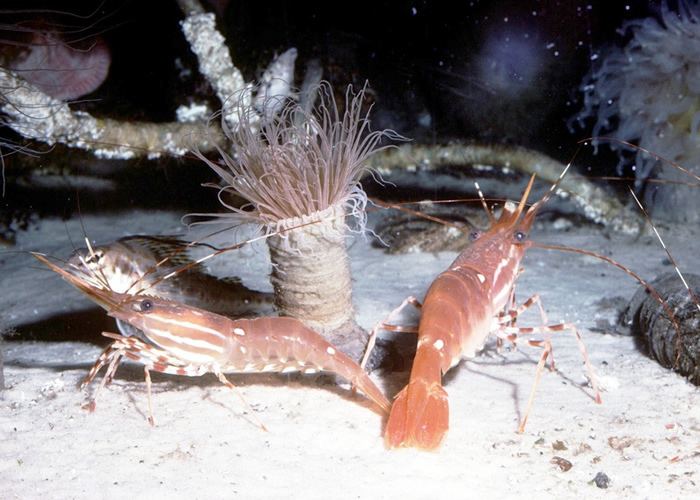
Anatomy
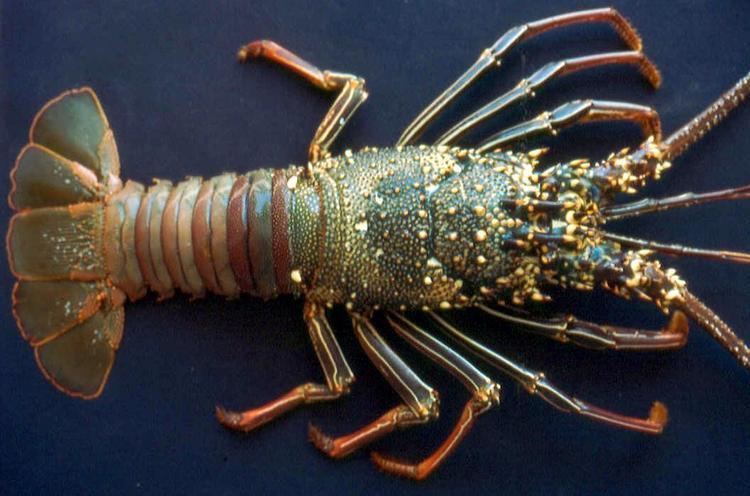
As the name Decapoda (from the Greek δέκα, deca-, "ten", and πούς / ποδός, -pod, "foot") implies, all decapods have what are considered ten legs, in the form of five pairs of thoracic appendages on the last five thoracic segments. Decapods can have as many as twenty apendages, arranged in one pair per body segment. The front three pairs function as mouthparts and are generally referred to as maxillipeds; the remainder are pereiopods. In many decapods, however, one pair of "legs" has enlarged pincers; the claws are called chelae, so those legs may be called chelipeds. The remaining appendages are found on the abdomen, with each segment capable of carrying a pair of biramous pleopods, the last of which form part of the tail fan (together with the telson) and are called uropods.
Classification
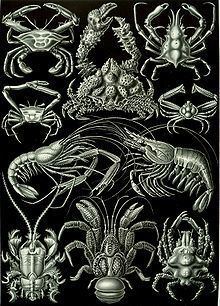
Classification within the order Decapoda depends on the structure of the gills and legs, and the way in which the larvae develop, giving rise to two suborders: Dendrobranchiata and Pleocyemata. The Dendrobranchiata consist of prawns, including many species colloquially referred to as "shrimp", such as the "white shrimp", Litopenaeus setiferus. The Pleocyemata include the remaining groups, including "true shrimp". Those groups which usually walk rather than swim (Pleocyemata, excluding Stenopodidea and Caridea) form a clade called Reptantia.
This classification to the level of superfamilies follows De Grave et al.
Order Decapoda Latreille, 1802
